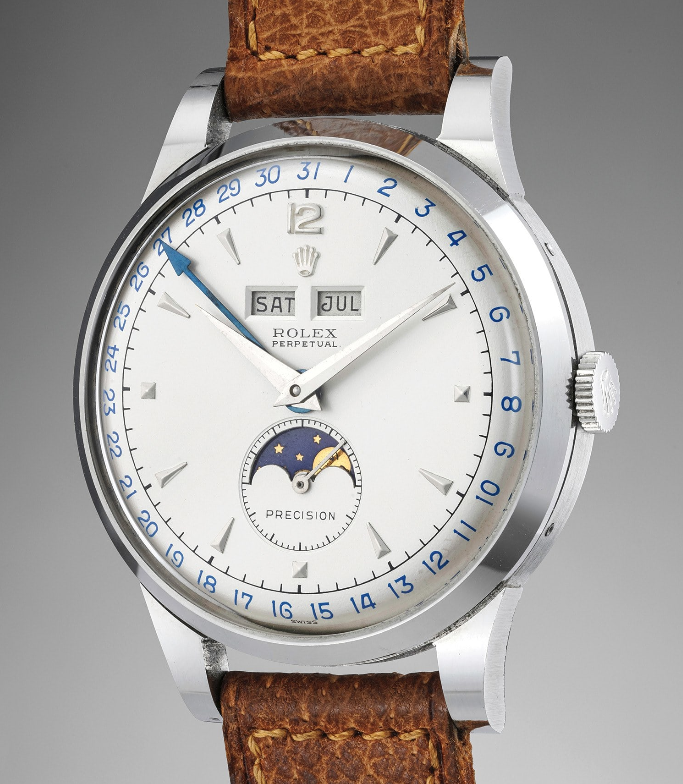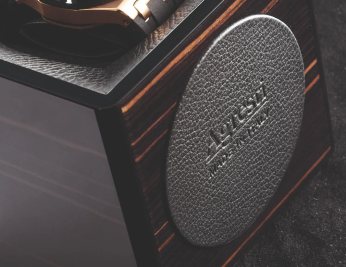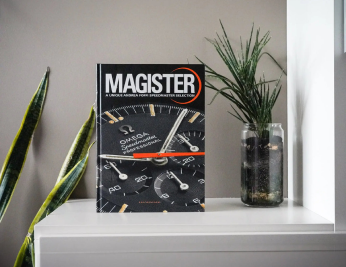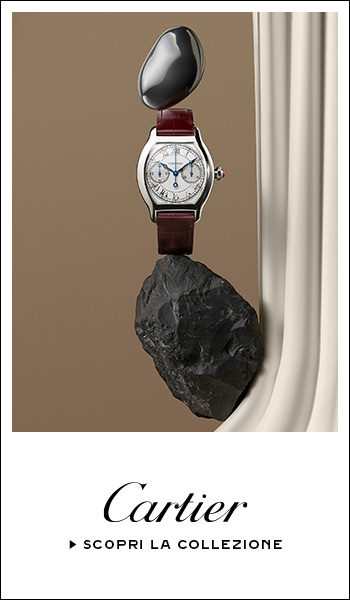One of the many principles that Rolex has always stood for ever since its creation, is reliability: you can take your timepiece through hell and back and it’ll still tick. In the past, the trade-off for this reliability was simplicity (or rather, nowadays we see those watches as rather straightforward and simple from a design point of view).
That being said, however, it would be foolish to think that, historically, Rolex never dabbled in the world of “complications” to enrich the watch’s appeal, because that’s simply not true.

Just to name a few complications in Rolex’s achived portofolio: lunar phases, date, day of the week, power reserve, world timers, Tourbillon and minute repeaters.
These are all engineering marvels that make the watch super interesting, but equally fragile and expensive to service such that only a handful of master watchmakers are allowed to carry out maintenance and repair on them (now do you see what I mean by tradeoffs for reliability?).
The most complicated Rolex in the lineup
In this article, I want to talk you through the most complicated Rolex currently in the brand’s lineup: today, we’re talking about the Rolex Sky Dweller.
Released at the 2012 edition of Baselworld, the Rolex Sky-Dweller marked a totally new type of Rolex: their first annual calendar.

The Saros mechanism
Powering the Rolex Sky-Dweller is a rather straightforward caliber, but one that is capable of carrying out very complex processes.
Finally, reliability and complication were not mutually exclusive: the Sky-Dweller brought both of these characteristics to the table.
What makes the Rolex Sky-Dweller very special, though, is the Saros system. The name comes from the Greek term to describe the astronomical phenomenon when the Sun, Earth and Moon are perfectly aligned with each other. This is also the cornerstone of the “annual calendar” function.
The assembly that you can see below shows how the smaller gear rotates around the central wheel, also tracking the date wheel, too. This also allows for that very same gear to dsiplay the correct month.

The annual calendar
Okay, I’ve used that term in this article a couple of times by now. Although it’s not marketed as one, it can definitely be considered as one. But what actually is an annual calendar?
In very simple terms, it is a complication that allows for the watch to display the date (sometimes day, too), and month, whilst automatically accounting for the months that have 30 or 31 days – i.e. it “knows” which one’s which. The only exception? February (with either 28 or 29 days): the wearer will manually have to adjust this. (Oh, the horror)
If that step was also automated, we would be in the presence of a perpetual calendar.
The dual time zone
The Rolex Sky-Dweller utilised 14 new patents in order to adopt a dual time zone function to operate and to to be displayed in a different fashion to the Explorer II or the GMT Master. Whilst the latter two come in the form of a graduated bezel, the Sky-Dweller features a slightly asymmetrical dial with a 24-hour ring. The time in the different time zone can be read by looking at the number indicated by the red and white triangle just below the Rolex signature.

How are the months indicated?
You might have already noticed that just outside each hour marker, there are small white windows or apertures, with the exception of one which is red. This is the genius of Rolex: there are 12 months in a year, just like there are 12 hour markers on a standard dial. So, each hour marker’s small window represents the month, starting with January at the 1 o’clock position. The current month is the one that is “lit” by the red window. This is alll made possible by the aforementioned Saros system.
Not your ordinary fluted bezel
The fluted bezel is a staple in Rolex’s classic timepiece catalogue, present on Day-Dates and Datejusts alike.
Whilst for other models it’s a purely aesthetic addition, the Sky-Dweller’s bezel actually serves a very important purpose: by rotating it, you can switch between each complication to adjust it.

Confused? Allow me to explain.
The Rolex Sky-Dweller’s Bezel can be rotated into 3 positions, each allowing to adjust the calendar, local time (regular hands) and the second time zone time respectively.
Once the bezel is adjusted, by pulling out the crown, you can adjust/set the selected function just as you would normally on any other watch. This function is aptly named the Rolex “Ring Command“.

Other features
Each Sky-Dweller features a 42mm case, and is powered by the ultra-technical caliber 9001, a totally in-house automatic movement. Although it’s quite possibly the most complicated caliber Rolex has ever made, it’s one of the easiest to operate given the multiple functionalities it can carry out!

The Sky-Dweller comes in different versions: steel, yellow gold, rose gold, or the steel-gold combo. It can be paired on all of those respective bracelets, or otherwise on a leather strap. Each model also comes with different dial colours.
On the market
For the most part, the success of the Rolex Sky-Dweller was rather disappointing.
Many potential clients didn’t fully understand and appreciate just how complicated this watch was, so they thought that the pretty steep price-tag (particularly for the gold versions) wasn’t really all that justified or worth it. For that reason, you won’t find many Sky-Dwellers on the wrists of collectors.
The steel and steel-gold versions were the only really “accessible” Sky-Dwellers but even then, they didn’t sell as well as Rolex expected.
However, that’s not entirely the case on the aftermarket. These configurations of the Sky-Dweller have seen a very stable aftermarket lifetime thus far, maintaining most of their value: you can make the steel one yours for about €14,200, meanwhile the steel-gold combination will set you back €16,900, somewhat disproportionally more.
The retail price of the full yellow gold version is €44,800, whereas the rose gold iteration comes in at €45,000. The same models with a leather strap option clock in at €37,250 and €38,650 respectively.
-Translated by Patrick R.














